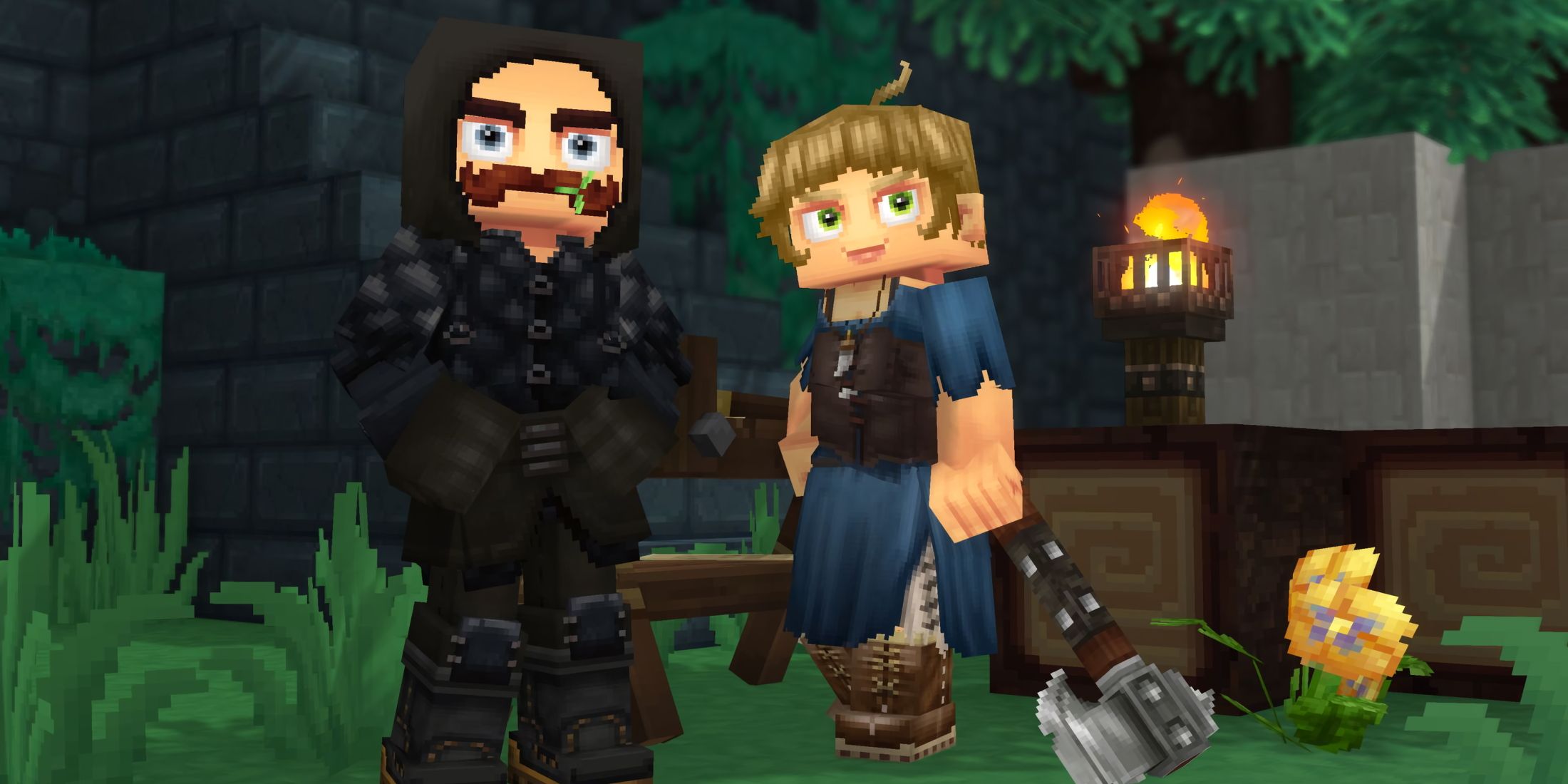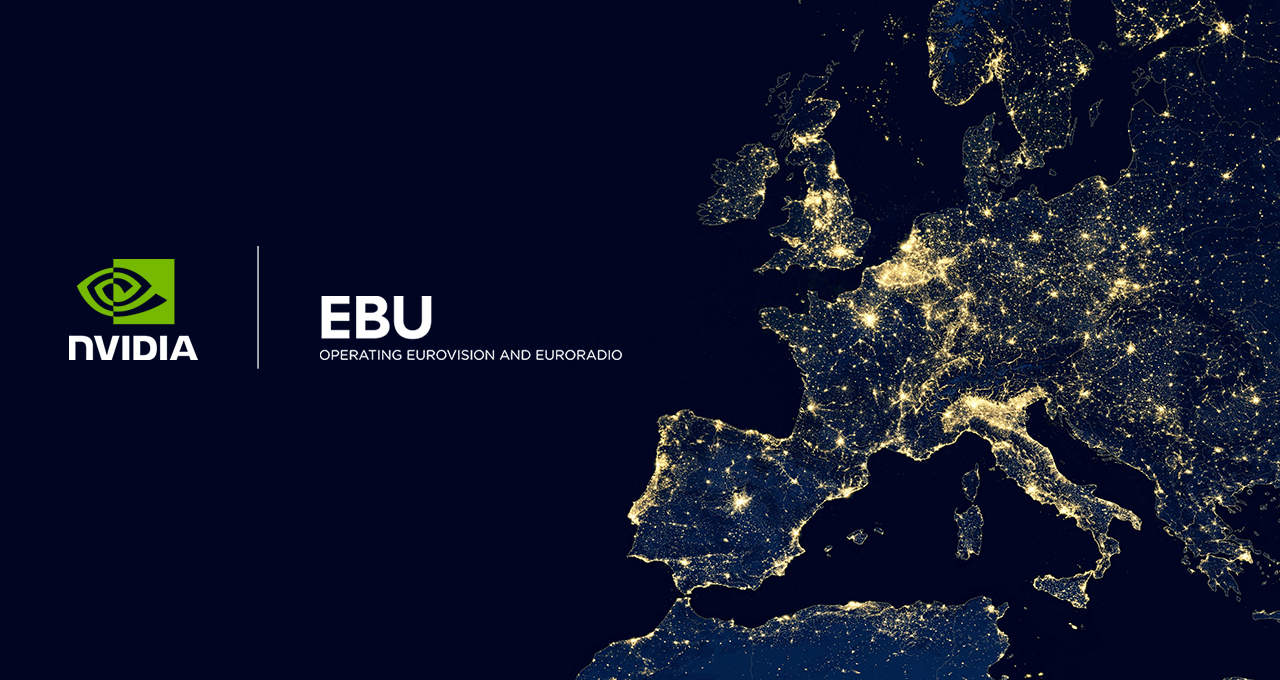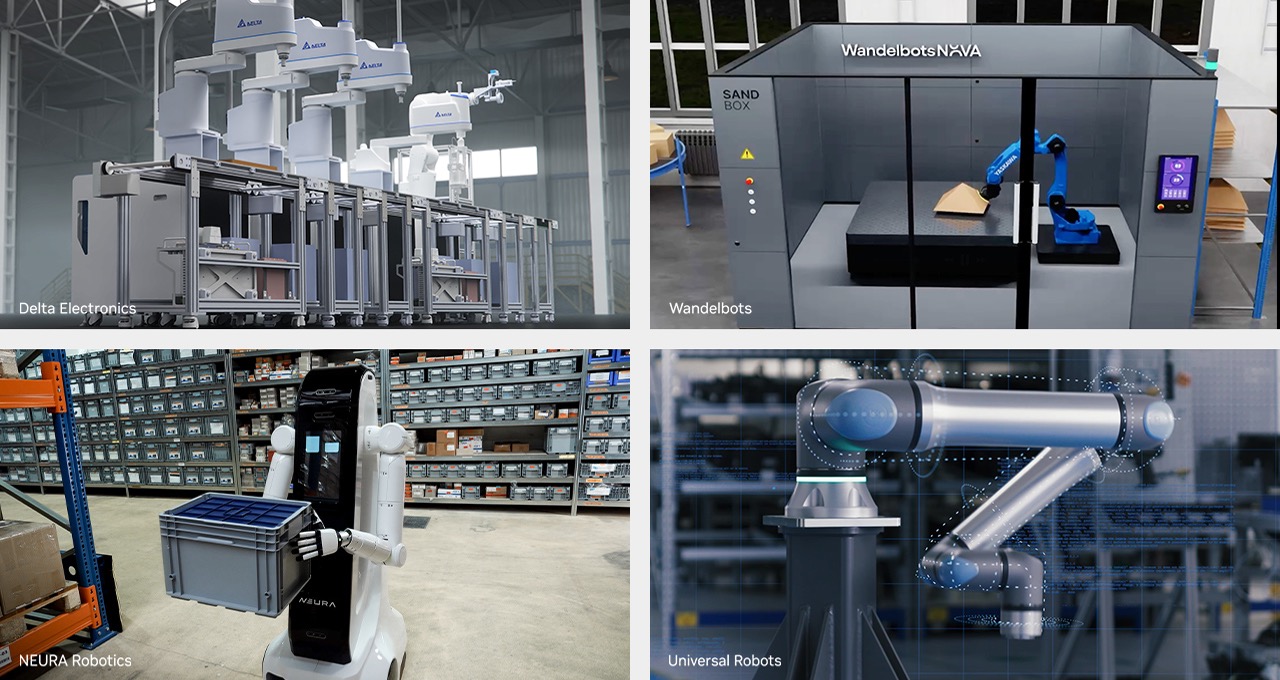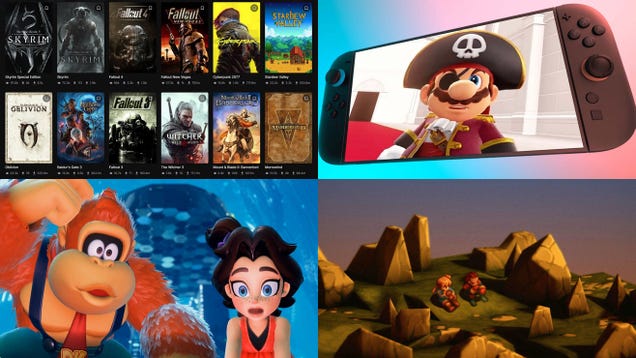The 15 Best Games Like Hollow Knight To Get Lost In
The hardest part about finding games like Hollow Knight is knowing where to start. The overwhelming success of Team Cherry's award-winning 2017 game--and anticipation of its long-awaited sequel, Silksong--prompted a flood of similar games all looking to capture the magic of combining soulslike combat with deep exploration. Some are more inventive than others, building on Hollow Knight's foundations to push that style of game forward in new or unexpected ways. Others take a specific aspect, such as grueling boss fights, and run with it. We've combed through the lot and picked out 15 of the best games like Hollow Knight to get you started in this impressively varied sub-genre.If you're not as excited about combat and want puzzles and exploration instead, head over to our list of the best metroidvania games. Nine Sols Platforms: PC, Xbox Series X|S, PlayStation 5Release Date: May 29, 2024Developer: Red Candle GamesIf Hollow Knight is the Dark Souls of metroidvanias, then Nine Sols is the genre's Sekiro: Shadows Die Twice. Parrying is at the core of almost everything you do in Nine Sols, from dealing with standard enemies to wearing down some of its relentless bosses. Among games like Hollow Knight, it's also one of the most thematically and visually distinct. Developer Red Candle Games call Nine Sols a "Taopunk," a blend of sci-fi punk with traditional Taoist architecture and symbolism. Most protagonists in games like these are blank slates, but Nine Sols adds a personal touch by making the personality of its hero, Yi, an important part of the story. Yi starts out seeking revenge, and ends up on a journey to save the world and himself, becoming a reluctant hero in the process. See at Humble Animal Well Platforms: PC, Nintendo Switch, Xbox Series X|S, PlayStation 5Release Date: May 9, 2024Developer: Billy Basso, Shared Memory LLCAnimal Well is a puzzle, or more accurately, a lot of puzzles. There's a bit of combat and some platforming, but mostly, it's about trying to unravel dozens of mysteries big and small as you delve ever further into a maze that wouldn't be out of place in Lewis Carrol's Wonderland stories. Explaining too much about what's going on would spoil what makes Animal Well special, but the most interesting and even subversive parts of it is that you have almost nothing to guide you and can make discoveries in any order. That freedom creates a sense of discovery and wonder that's often absent from the procedural methods inherent in these kinds of games.Read our Animal Well review. See at Steam Ultros Platforms: PC, PlayStation 5Release Date: February 13, 2024Developer: HadoqueOf all the games like Hollow Knight, Ultros takes the most organic approach to metroidvanias, and we mean that literally. You, an intergalactic explorer, arrive on a psychedelic space colony called The Sarcophagus and find it teeming with exotic life and mysterious spiritual energies. You use the life force and remains of enemies to nourish your mind and unlock new abilities, and there's a scoring system that ranks how efficiently you defeat your foes. That determines the quality of the loot they drop, so if you want to unlock and improve your skills, you have to plan each encounter carefully. Ultros is also absolutely beautiful, a dream-like blend of esoteric architecture and wild ecosystems with closer ties to the Sarcophagus' secrets than Ultros initially suggests. Read our Ultros review. See at Fanatical Blasphemous 2 Platforms: PlayStation 5, PC, Xbox Series X|S, Nintendo SwitchRelease Date: August 24, 2023Developer: The Game KitchenBlasphemous 2's big addition over its predecessor--apart from even more ghoulish and gory moments--is the inclusion of more platforming. The first Blasphemous is a bit one-note, which is great if you're just here for the combat, but not so much if you want, well, anything else. Blasphemous 2 throws in some challenging and smartly-designed platforming as well, bringing it closer to the likes of Hollow Knight. Better still, developer The Game Kitchen was more ambitious with its environment design as well, with more complex layouts, better backgrounds and lighting, and even colors that aren't brown, grey, and blood.Read our Blasphemous 2 review. See at Fanatical Elden Ring Platforms: PlayStation 5, PlayStation 4, Xbox One, Xbox Series X|S, PCRelease Date: February 25, 2022Developer: FromSoftwareOkay, so Elden Ring doesn't have the exploration style of Hollow Knight, but it does have the kind of grueling combat that inspired Team Cherry's spectacular boss fights, and lots of it. It's FromSoftware's first open-world game, one that follows a lone, nameless warrior in their bid to bring salvation to a shattered land--or make its ruin everlasting. Mostly, though, it's a giant playground for dozens of exceptionally well-designed and challenging bosses to stomparound in, with enemies ranging from fire-spewing land dragons to the spirits of an ancient civilization and a gigantic, greatsword-wielding prince on his favorite little horsey. Read our Elden Ring review. See at Fanatical Cuphead Platforms: PlayStation 4, Xbox One, PCRelease Date: September 29, 2017Developer: Studio MDHRIf you really like boss fights and are less bothered about exploration and all the other Hollow Knight-y bits, Cuphead is definitely worth checking out. Don't let Studio MDHR's retro cartoon style give you the wrong impression, either. Cuphead's cutesy bosses demand careful planning, precise execution, and a lot of patience. The battles aren't the only thing Cuphead has going for it, though. Studio MDHR's exquisite animation, the soundtrack, even period-specific cartoon-style sound effects--the entire game is a spectacle in the best way. Read our Cuphead review. See at Fanatical Castlevania Advance Collection Platforms: Xbox Series X|S, Nintendo Switch, PlayStation 5, PCRelease Date: September 23, 2021Developer: KonamiAny of the Castlevania bundles are strong picks, but the Castlevania Advance Collection should be your go-to choice for the kind of classic action that Hollow Knight builds on. The collection includes Circle of the Moon--low on our list of the best Castlevania games only on account of it not really doing anything that Symphony of the Night didn't--the excellent Harmony of Dissonance, and the even better Aria of Sorrow. Sorrow is the standout inclusion, one that radically shook up the Castlevania formula by removing the Belmonts from the equation, telling an entirely new story set in the distantfuture, and giving the protagonist, Soma, an ability that absorbed enemy souls for use in combat. It helps that Sorrow, as well as Harmony, have an excellent selection of bosses and some fantastically moody settings, too. See at Humble Ori and the Blind Forest Platforms: PlayStation 4, Xbox One, Nintendo Switch, PCRelease Date: March 11, 2015Developer: Moon StudiosOri and the Blind Forest starts like the end of a Disney movie. A cute little creature finds a family in the middle of a dream-like forest, and that family gets taken away from them. Your job is to figure out why and find a way to save the woods. Ori takes Hollow Knight's demanding platforming even further with some segments that wouldn't feel out of place in something like Celeste, but the real stand-out feature is the map. In addition to being a well-designed metroidvania world, it's absolutely gorgeous and a delight to explore. Blind Forest is a modern classic, and its sequel, Ori and the Will of the Wisps manages to improve it even further.Read our Ori and the Blind Forest review and Ori and the Will of the Wisps review. See at Fanatical Ender Magnolia: Bloom in the Mist Platforms: PlayStation 4, PlayStation 5, Xbox One, Xbox Series X|S, PC, Nintendo SwitchRelease Date: March 25, 2024Developer: AdiglobeIn the onslaught of games like Hollow Knight that released following Team Cherry's success, developer Adiglobe decided to shake up the formula first with Ender Lilies and then with the more refined Ender Magnolia. You've got your standard elements, such as gigantic bosses that force you to learn their patterns and a puzzle-like map that unfolds as you gain more powers. Those powers, however, are the spirits of fallen friends who also aid you in combat. You find several, but can only recruit a handful at a time, which adds a layer of strategy to exploration and combat. There's also a strong sense of emotional attachment, since you and your ghostly allies have history and connection of a kind that's often missing in these games when you just play as an outside observer. See at Steam Metroid Dread Platforms: Nintendo SwitchRelease Date: October 8, 2021Developer: Nintendo EADAny Metroid game is going to have something of that Hollow Knight feel, since the sci-fi series is a big part of where the genre and Hollow Knight in particular came from. However, the easiest to get your hands on without having to pay for a subscription is Metroid Dread. It's the culmination of the 2D Metroid saga that started in 1986, but you can get by just fine if this is your first. Dread follows bounty hunter Samus Aran as she searches for evidence of a deadly parasite, only to find herself hunted by rogue robots--sometimes. The stealth segments that have you hiding from your metal hunters only take place in specific areas. The rest of Metroid Dread takes you across sprawling subterranean research labs, sunken testing stations, and extravagant dwellings, featuring the series' biggest map ever, stuffed with secrets and formidable bosses. If you really enjoy those bosses, Dread has a boss rush mode you can test yourself against as well.Read our Metroid Dread review. See Lone Fungus Platforms: PCRelease Date: September 21, 2021Developer: Basti GamesThese types of games tend to lean more toward the edgy, dark, and broody side of things, which makes Lone Fungus a gem in the genre. You're the last mushroom on Earth, exploring a vast network of tunnels and temples in search of treasure and using magic skills that change form depending on how you swing your sword. A ball of energy is damaging to one enemy, for example, but you can smack it and shatter it into several projectiles to clear out lots of foes at once. Best of all, though, Lone Fungus has a robust Assist Mode that lets people of all skill levels enjoy the game and just makes it more relaxed in general, with features such as extra platforms, no costs for spells, slower platforms, and invincibility so your little fungus won't die. See at Humble Dead Cells Platforms: PlayStation 4, Xbox One, Nintendo Switch, PCRelease Date: May 10, 2027Developer: Motion TwinDead Cells throws roguelite randomness into the metroidvania mix and ratchets up the challenge as well. You're a spirit determined to figure out why you died, and in the absence of a tangible vessel for your ethereal self, you pilot shambling corpses in a bid to make it through streets, swamps, dungeons, and horrors untold. These corpses aren't the sturdiest, so when you fail, they fall apart and you start again. Eventually, you can unlock permanent upgrades, but with no checkpoints at any stage of the journey, you'll have to rely on your skill with weapons and knowledge of enemy behavior to make it through. If you enjoy Dead Cells, you can pick up DLC packs that add new locations, weapons, and enemies, and there's even a Castlevania-themed expansion as well. Read our Dead Cells review. See at Fanatical Monster Sanctuary Platforms: Nintendo Switch, Xbox Series One, PCRelease Date: August 28, 2019Developer: DeveloperIf you like a bit of Pokemon with your Hollow Knight, Monster Sanctuary might be for you. You play as a fledgling monster tamer out to explore the vast world with just a single critter by your side. You'll find and tame more, training them into the best versions of themselves and using their abilities not just to deal with threats in the sanctuary, but to explore its secrets and hidden areas as well. Monster Sanctuary is lighter and breezier than some games on this list, but if something more intense is to your liking, there's a robust PvP element where you can challenge other players and their monster teams too. See at Fanatical Salt and Sanctuary Platforms: PC, PlayStation 4, Xbox One, Nintendo SwitchRelease Date: March 15, 2016Developer: Ska StudiosUpgrades and customization are usually rather limited in games like Hollow Knight, which makes Salt and Sanctuary, with its more in-depth RPG components, something special. You play as a sailor, washed up on some evil-looking, godforsaken island and foolish enough to go exploring the mysterious labyrinth underneath. What you find is a parade of nightmares and some spectacular, bone-crunchingly hard 2D boss fights that are among the best Soulslike challenges out there. Read our Salt and Sanctuary review. See at Humble Bō: Path of the Teal Lotus Platforms: PC, Xbox Series X|S, PlayStation 5, Nintendo SwitchRelease Date: July 17, 2024Developer: Squid Shock StudiosMovement is often a means to an end in video games--a double jump that propels you higher, for example, or a dash that lets you avoid dangerous terrain. In Bō: Path of the Teal Lotus, it's no exaggeration to say movement is everything. Bouncing, flying, gliding, moving with magical speed, and navigating the hand-drawn world is just as important as battling the myths and monsters inspired by Japanese folklore. Path of the Teal Lotus is one of the most elegant platformers around, and it even has a reset system where you can pause or rewind a failed jump to try again, perfect for learning some of the more difficult segments. Read our Path of the Teal Lotus review. See at Fanatical
#best #games #like #hollow #knight
The 15 Best Games Like Hollow Knight To Get Lost In
The hardest part about finding games like Hollow Knight is knowing where to start. The overwhelming success of Team Cherry's award-winning 2017 game--and anticipation of its long-awaited sequel, Silksong--prompted a flood of similar games all looking to capture the magic of combining soulslike combat with deep exploration. Some are more inventive than others, building on Hollow Knight's foundations to push that style of game forward in new or unexpected ways. Others take a specific aspect, such as grueling boss fights, and run with it. We've combed through the lot and picked out 15 of the best games like Hollow Knight to get you started in this impressively varied sub-genre.If you're not as excited about combat and want puzzles and exploration instead, head over to our list of the best metroidvania games. Nine Sols Platforms: PC, Xbox Series X|S, PlayStation 5Release Date: May 29, 2024Developer: Red Candle GamesIf Hollow Knight is the Dark Souls of metroidvanias, then Nine Sols is the genre's Sekiro: Shadows Die Twice. Parrying is at the core of almost everything you do in Nine Sols, from dealing with standard enemies to wearing down some of its relentless bosses. Among games like Hollow Knight, it's also one of the most thematically and visually distinct. Developer Red Candle Games call Nine Sols a "Taopunk," a blend of sci-fi punk with traditional Taoist architecture and symbolism. Most protagonists in games like these are blank slates, but Nine Sols adds a personal touch by making the personality of its hero, Yi, an important part of the story. Yi starts out seeking revenge, and ends up on a journey to save the world and himself, becoming a reluctant hero in the process. See at Humble Animal Well Platforms: PC, Nintendo Switch, Xbox Series X|S, PlayStation 5Release Date: May 9, 2024Developer: Billy Basso, Shared Memory LLCAnimal Well is a puzzle, or more accurately, a lot of puzzles. There's a bit of combat and some platforming, but mostly, it's about trying to unravel dozens of mysteries big and small as you delve ever further into a maze that wouldn't be out of place in Lewis Carrol's Wonderland stories. Explaining too much about what's going on would spoil what makes Animal Well special, but the most interesting and even subversive parts of it is that you have almost nothing to guide you and can make discoveries in any order. That freedom creates a sense of discovery and wonder that's often absent from the procedural methods inherent in these kinds of games.Read our Animal Well review. See at Steam Ultros Platforms: PC, PlayStation 5Release Date: February 13, 2024Developer: HadoqueOf all the games like Hollow Knight, Ultros takes the most organic approach to metroidvanias, and we mean that literally. You, an intergalactic explorer, arrive on a psychedelic space colony called The Sarcophagus and find it teeming with exotic life and mysterious spiritual energies. You use the life force and remains of enemies to nourish your mind and unlock new abilities, and there's a scoring system that ranks how efficiently you defeat your foes. That determines the quality of the loot they drop, so if you want to unlock and improve your skills, you have to plan each encounter carefully. Ultros is also absolutely beautiful, a dream-like blend of esoteric architecture and wild ecosystems with closer ties to the Sarcophagus' secrets than Ultros initially suggests. Read our Ultros review. See at Fanatical Blasphemous 2 Platforms: PlayStation 5, PC, Xbox Series X|S, Nintendo SwitchRelease Date: August 24, 2023Developer: The Game KitchenBlasphemous 2's big addition over its predecessor--apart from even more ghoulish and gory moments--is the inclusion of more platforming. The first Blasphemous is a bit one-note, which is great if you're just here for the combat, but not so much if you want, well, anything else. Blasphemous 2 throws in some challenging and smartly-designed platforming as well, bringing it closer to the likes of Hollow Knight. Better still, developer The Game Kitchen was more ambitious with its environment design as well, with more complex layouts, better backgrounds and lighting, and even colors that aren't brown, grey, and blood.Read our Blasphemous 2 review. See at Fanatical Elden Ring Platforms: PlayStation 5, PlayStation 4, Xbox One, Xbox Series X|S, PCRelease Date: February 25, 2022Developer: FromSoftwareOkay, so Elden Ring doesn't have the exploration style of Hollow Knight, but it does have the kind of grueling combat that inspired Team Cherry's spectacular boss fights, and lots of it. It's FromSoftware's first open-world game, one that follows a lone, nameless warrior in their bid to bring salvation to a shattered land--or make its ruin everlasting. Mostly, though, it's a giant playground for dozens of exceptionally well-designed and challenging bosses to stomparound in, with enemies ranging from fire-spewing land dragons to the spirits of an ancient civilization and a gigantic, greatsword-wielding prince on his favorite little horsey. Read our Elden Ring review. See at Fanatical Cuphead Platforms: PlayStation 4, Xbox One, PCRelease Date: September 29, 2017Developer: Studio MDHRIf you really like boss fights and are less bothered about exploration and all the other Hollow Knight-y bits, Cuphead is definitely worth checking out. Don't let Studio MDHR's retro cartoon style give you the wrong impression, either. Cuphead's cutesy bosses demand careful planning, precise execution, and a lot of patience. The battles aren't the only thing Cuphead has going for it, though. Studio MDHR's exquisite animation, the soundtrack, even period-specific cartoon-style sound effects--the entire game is a spectacle in the best way. Read our Cuphead review. See at Fanatical Castlevania Advance Collection Platforms: Xbox Series X|S, Nintendo Switch, PlayStation 5, PCRelease Date: September 23, 2021Developer: KonamiAny of the Castlevania bundles are strong picks, but the Castlevania Advance Collection should be your go-to choice for the kind of classic action that Hollow Knight builds on. The collection includes Circle of the Moon--low on our list of the best Castlevania games only on account of it not really doing anything that Symphony of the Night didn't--the excellent Harmony of Dissonance, and the even better Aria of Sorrow. Sorrow is the standout inclusion, one that radically shook up the Castlevania formula by removing the Belmonts from the equation, telling an entirely new story set in the distantfuture, and giving the protagonist, Soma, an ability that absorbed enemy souls for use in combat. It helps that Sorrow, as well as Harmony, have an excellent selection of bosses and some fantastically moody settings, too. See at Humble Ori and the Blind Forest Platforms: PlayStation 4, Xbox One, Nintendo Switch, PCRelease Date: March 11, 2015Developer: Moon StudiosOri and the Blind Forest starts like the end of a Disney movie. A cute little creature finds a family in the middle of a dream-like forest, and that family gets taken away from them. Your job is to figure out why and find a way to save the woods. Ori takes Hollow Knight's demanding platforming even further with some segments that wouldn't feel out of place in something like Celeste, but the real stand-out feature is the map. In addition to being a well-designed metroidvania world, it's absolutely gorgeous and a delight to explore. Blind Forest is a modern classic, and its sequel, Ori and the Will of the Wisps manages to improve it even further.Read our Ori and the Blind Forest review and Ori and the Will of the Wisps review. See at Fanatical Ender Magnolia: Bloom in the Mist Platforms: PlayStation 4, PlayStation 5, Xbox One, Xbox Series X|S, PC, Nintendo SwitchRelease Date: March 25, 2024Developer: AdiglobeIn the onslaught of games like Hollow Knight that released following Team Cherry's success, developer Adiglobe decided to shake up the formula first with Ender Lilies and then with the more refined Ender Magnolia. You've got your standard elements, such as gigantic bosses that force you to learn their patterns and a puzzle-like map that unfolds as you gain more powers. Those powers, however, are the spirits of fallen friends who also aid you in combat. You find several, but can only recruit a handful at a time, which adds a layer of strategy to exploration and combat. There's also a strong sense of emotional attachment, since you and your ghostly allies have history and connection of a kind that's often missing in these games when you just play as an outside observer. See at Steam Metroid Dread Platforms: Nintendo SwitchRelease Date: October 8, 2021Developer: Nintendo EADAny Metroid game is going to have something of that Hollow Knight feel, since the sci-fi series is a big part of where the genre and Hollow Knight in particular came from. However, the easiest to get your hands on without having to pay for a subscription is Metroid Dread. It's the culmination of the 2D Metroid saga that started in 1986, but you can get by just fine if this is your first. Dread follows bounty hunter Samus Aran as she searches for evidence of a deadly parasite, only to find herself hunted by rogue robots--sometimes. The stealth segments that have you hiding from your metal hunters only take place in specific areas. The rest of Metroid Dread takes you across sprawling subterranean research labs, sunken testing stations, and extravagant dwellings, featuring the series' biggest map ever, stuffed with secrets and formidable bosses. If you really enjoy those bosses, Dread has a boss rush mode you can test yourself against as well.Read our Metroid Dread review. See Lone Fungus Platforms: PCRelease Date: September 21, 2021Developer: Basti GamesThese types of games tend to lean more toward the edgy, dark, and broody side of things, which makes Lone Fungus a gem in the genre. You're the last mushroom on Earth, exploring a vast network of tunnels and temples in search of treasure and using magic skills that change form depending on how you swing your sword. A ball of energy is damaging to one enemy, for example, but you can smack it and shatter it into several projectiles to clear out lots of foes at once. Best of all, though, Lone Fungus has a robust Assist Mode that lets people of all skill levels enjoy the game and just makes it more relaxed in general, with features such as extra platforms, no costs for spells, slower platforms, and invincibility so your little fungus won't die. See at Humble Dead Cells Platforms: PlayStation 4, Xbox One, Nintendo Switch, PCRelease Date: May 10, 2027Developer: Motion TwinDead Cells throws roguelite randomness into the metroidvania mix and ratchets up the challenge as well. You're a spirit determined to figure out why you died, and in the absence of a tangible vessel for your ethereal self, you pilot shambling corpses in a bid to make it through streets, swamps, dungeons, and horrors untold. These corpses aren't the sturdiest, so when you fail, they fall apart and you start again. Eventually, you can unlock permanent upgrades, but with no checkpoints at any stage of the journey, you'll have to rely on your skill with weapons and knowledge of enemy behavior to make it through. If you enjoy Dead Cells, you can pick up DLC packs that add new locations, weapons, and enemies, and there's even a Castlevania-themed expansion as well. Read our Dead Cells review. See at Fanatical Monster Sanctuary Platforms: Nintendo Switch, Xbox Series One, PCRelease Date: August 28, 2019Developer: DeveloperIf you like a bit of Pokemon with your Hollow Knight, Monster Sanctuary might be for you. You play as a fledgling monster tamer out to explore the vast world with just a single critter by your side. You'll find and tame more, training them into the best versions of themselves and using their abilities not just to deal with threats in the sanctuary, but to explore its secrets and hidden areas as well. Monster Sanctuary is lighter and breezier than some games on this list, but if something more intense is to your liking, there's a robust PvP element where you can challenge other players and their monster teams too. See at Fanatical Salt and Sanctuary Platforms: PC, PlayStation 4, Xbox One, Nintendo SwitchRelease Date: March 15, 2016Developer: Ska StudiosUpgrades and customization are usually rather limited in games like Hollow Knight, which makes Salt and Sanctuary, with its more in-depth RPG components, something special. You play as a sailor, washed up on some evil-looking, godforsaken island and foolish enough to go exploring the mysterious labyrinth underneath. What you find is a parade of nightmares and some spectacular, bone-crunchingly hard 2D boss fights that are among the best Soulslike challenges out there. Read our Salt and Sanctuary review. See at Humble Bō: Path of the Teal Lotus Platforms: PC, Xbox Series X|S, PlayStation 5, Nintendo SwitchRelease Date: July 17, 2024Developer: Squid Shock StudiosMovement is often a means to an end in video games--a double jump that propels you higher, for example, or a dash that lets you avoid dangerous terrain. In Bō: Path of the Teal Lotus, it's no exaggeration to say movement is everything. Bouncing, flying, gliding, moving with magical speed, and navigating the hand-drawn world is just as important as battling the myths and monsters inspired by Japanese folklore. Path of the Teal Lotus is one of the most elegant platformers around, and it even has a reset system where you can pause or rewind a failed jump to try again, perfect for learning some of the more difficult segments. Read our Path of the Teal Lotus review. See at Fanatical
#best #games #like #hollow #knight















